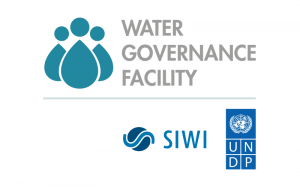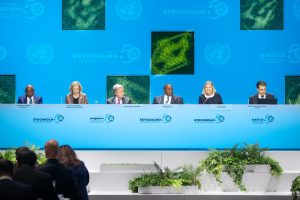The human right to a safe, clean, healthy, and sustainable environment: the legal nitty-gritty
Environmental and human rights advocates, as well as the public, can use it as a leverage to put pressure on national authorities and the world community to take action.
Constructing a ‘new’ human right
To establish this ‘new’ right to a healthy environment, the Council employed a similar construction to that which was developed eleven years ago, when the human rights to water and sanitation (HRWS) were adopted. It draws on how this right is “essential for the full enjoyment of all human rights”, and “inextricably related to the right to life and the right to the highest attainable standard of physical and mental health, as well as other rights”. It is therefore stated that the HRHE “is in accordance with existing international law”.
However, the Council did not make any reference to the 1966 Covenant on Economic, Social and Cultural Rights (ICESCR) or any other conventions already binding on State Parties that signed and ratified them, as was done for the HRWS. And despite various types of recognitions in national law and policy, this right has yet to become binding under international customary law, which exists independent of agreed multilateral treaties. It is too early to discern any ‘general and consistent practice’ of States that is followed from ‘a sense of legal obligation’.
Importantly, the right to a sustainable environment is about human – anthropocentric – health and well-being, whereas nature’s own rights are outside its scope.
No rights without obligations
The ICESCR specifies that State Parties must adopt legislative measures to achieve, progressively, the human rights. The 2018 Framework Principles explain that to protect against environmental harm and to fully realise the human rights that depend on a healthy and sustainable environment, States must establish, maintain, and enforce effective legal and institutional frameworks. These should include substantive environmental standards, including those related to freshwater quality and the global climate.
The Special Rapporteur has also published several reports mapping the obligations necessary to realise the HRHE:
- On existing obligations: Report A/HRC/22/43 (2012), and report A/HRC/25/53 (2013);
- On obligations relating to biodiversity: Report A/HRC/34/49 (2017);
- On the ‘greening’ of human rights: Report A/73/188 (2018);
- On the relationship between children’s rights and environmental protection: Report A/HRC/37/58 (2018).
Rights and obligations relating to water resources
In terms of substance (the normative content or the attributes of the right), it is still early days to know more specifically what the HRHE means in relation to water resources. In his 2021 report Human rights and the global water crisis: water pollution, water scarcity and water-related disasters, the Special Rapporteur writes that safe and sufficient water is one of the substantive components of the HRHE. Current obligations provide that States must respect the right to property and adequate housing, which could be seen as corresponding to a right to be free from the impacts of extreme rainfall events, flooding, and sea level rise. Further, the State must already respect traditional and customary arrangements for water allocation that communities and indigenous peoples rely on. And lastly, ‘freedom from interference’ should include a State’s obligations not to arbitrarily disconnect, diminish, pollute, or contaminate water supplies, as well as to prevent third parties from doing so.
The business community, too, has a role
Resolution 48/13 also recalled the Guiding Principles on Business and Human Rights (UNGPs), which “underscore the responsibility of all business enterprises to respect human rights.” These Principles, unanimously adopted in 2011, are regarded international soft law and endorsed by a large number of companies.
This blogpost is part of a series that looks at human rights, water resources, and governance for a healthy and sustainable environment.
This is the second post. The next and final one describes what SIWI does in this field.
Read the first blog posts of the series: Human rights, water resources, and governance for a healthy and sustainable environment
This blogpost is part of










